PG Reducer — One-Touch Pneumatic Tube Fitting for Rapid, Tool-Free Compressed-Air Connections
Keywords: PG Reducer, one-touch pneumatic fitting, push-to-connect reducer, compressed air fittings, PC hex profile, pneumatic tubing reducer, quick connect pneumatic reducer
Introduction
The PG Reducer is a one-touch pneumatic tube fitting engineered for modern compressed-air systems where speed, reliability, and compact installation are critical. Designed to provide rapid, tool-free connection and disconnection of pneumatic tubing, the PG Reducer reduces assembly time and lowers the likelihood of installation errors. Its PC model features a hex-profile geometry for easy tightening and compact piping in confined spaces, while factory-applied thread seal coating ensures leak-resistant threaded joints without additional sealant. This article provides a comprehensive technical overview of the PG Reducer, including specifications, materials, features, application guidance, comparisons with alternative fittings, and best practices for maintenance and installation.
Technical Overview
The PG Reducer is a push-to-connect (also called one-touch or push-in) pneumatic reducer fitting designed for compressed-air service only. It enables immediate, tool-free coupling of flexible pneumatic tubing by inserting the tubing into the fitting until it seats; disconnection is equally simple by pressing the release sleeve and withdrawing the tubing. Typical connection or disconnection is completed within one to two seconds, making the fitting suitable for high-volume assembly and rapid field service.
Key functional attributes include:
- Push-to-connect mechanism that engages the tube with an internal collet and O-ring seal for a secure, pressure-rated connection.
- Reducer geometry that transitions between two different tube outer diameters and/or a threaded port size, enabling adaptions between tubing and threaded ports.
- PC (hex-profile) type that provides hex-shaped inner and outer faces to facilitate installation and wrench access in confined or closely spaced piping runs.
- Threaded ports with factory-applied seal coating to minimize leakage and eliminate the need for additional tape or liquid sealant in many applications.
- Compatibility with standard pneumatic tubing sizes (both metric and inch) and threaded port standards (PT/G or NPT) making the PG family broadly applicable across industrial systems.
Operation is simple and deterministic: the internal O-ring compresses around the tube OD to create a pressure-tight seal while the collet teeth or gripping ring secure the tubing against axial pull-out. The reducer is intended for compressed air only (do not use with liquids, aggressive gases, or fuels unless explicitly certified by the manufacturer).
Specifications and Dimensions
The following table summarizes the technical specifications and representative dimensional data across typical PG Reducer models. Values are representative; consult the manufacturer’s product datasheet for exact dimensions for a specific model code.
| Parameter | Value / Range |
|---|---|
| Service | Compressed air only |
| Working pressure | 0–150 PSI (0–9.9 kgf/cm², 0–990 kPa) |
| Vacuum capability | Down to −29.5 in Hg (≈ −750 mm Hg, ≈ 10 Torr) |
| Operating temperature | 0–60 °C (32–140 °F) |
| Tube size (metric) | φ4, φ6, φ8, φ10, φ12, φ16 |
| Tube size (inch) | 5/32″, 3/16″, 1/4″, 5/16″, 3/8″, 1/2″ |
| Thread standards | PT (G) and NPT (manufacturer-dependent) |
| Typical thread sizes available | 1/8″, 1/4″, 3/8″, 1/2″, 3/4″ (selected models) |
| Connection time | ≈1–2 seconds (insert or release) |
| Typical body materials | Nickel-plated brass or zinc alloy bodies; polymer sleeve/collet (see Materials section) |
Representative Dimensional Table by Model
| Model Code (example) | Tubing OD (in / mm) | Thread | Hex AF (mm) | Length L (mm) | Approx. Weight (g) |
|---|---|---|---|---|---|
| PG 04-1/8 | φ4 (4.0 mm) | 1/8″ PT/NPT | 11 | 22 | 8 |
| PG 06-1/8 | φ6 (6.0 mm) | 1/8″ PT/NPT | 13 | 25 | 10 |
| PG 08-1/4 | φ8 (8.0 mm) | 1/4″ PT/NPT | 14 | 28 | 12 |
| PG 10-3/8 | φ10 (10.0 mm) | 3/8″ PT/NPT | 17 | 30 | 18 |
| PG 12-1/2 | φ12 (12.0 mm) | 1/2″ PT/NPT | 22 | 36 | 28 |
| PG 16-3/4 | φ16 (16.0 mm) | 3/4″ PT/NPT | 27 | 42 | 40 |
Note: Hex AF = across flats dimension for the hex profile used to engage a wrench when tightening the threaded port. Length L is from tube end to the far face of the thread. Model code examples provided in the long description (e.g., PC 06 1/8, PG 06-04) follow manufacturer conventions where middle digits denote tube OD and trailing value indicates thread size.
Materials and Build Quality
Materials selection for push-to-connect fittings balances mechanical strength, chemical resistance, sealing integrity, and cost. The PG Reducer family typically employs a mix of metallic and polymeric materials chosen to meet pneumatic industry requirements. The following summarizes typical material configurations and the technical rationale behind them:
- Body (metallic parts): Brass (commonly nickel- or chrome-plated) or zinc alloy are typical materials for the threaded and load-bearing portions of the fitting. Brass provides excellent machinability, corrosion resistance, and ductility, while plated zinc alloys are cost-effective and suitable where chemical exposure is moderate. Metallic bodies provide robust thread engagement and mechanical durability for repeated installations.
- Sleeve / Collet: The external sleeve and internal collet are usually manufactured from engineering thermoplastics such as polyacetal (POM), polyamide (PA, nylon), or polycarbonate (PC) depending on the model (note: PC may also be a model code). These polymers offer high dimensional stability, low friction, and strong fatigue resistance. The sleeve includes the release mechanism and the collet retains the tubing with hardened teeth or gripping elements.
- Seals: The sealing elements are typically elastomeric O-rings made from Nitrile Butadiene Rubber (NBR/Buna-N) for general-purpose compressed-air applications due to its oil resistance and compression set properties. For higher-temperature or oil-laden environments, FKM (Viton) options may be available. The manufacturer usually specifies the elastomer compound and compatibility matrix.
- Thread seal coating: Threads are supplied with a factory-applied seal coating—this can be a pre-applied anaerobic or PTFE-based liquid/sealant that cures or remains tacky to block leaks. The factory coating simplifies assembly and reduces installation errors related to incorrect sealant application.
Build quality considerations:
- Precision machining and molding of the sealing surfaces ensure consistent O-ring compression and predictable pull-out force performance.
- Multi-stage collet teeth profiles provide strong retention while enabling clean, non-damaging release of tubing during maintenance.
- Surface finishes on metal threads and seats are optimized to mate with the pre-applied sealant for effective leak resistance under rated pressures.
- Hex-profile (PC type) design provides mechanical advantage for tightening in tight spaces while preventing damage to the polymer sleeve when wrenches are applied.
Manufacturers may offer different material options or upgraded elastomers for specific environments (e.g., vacuum service, oil-laden air, elevated temperatures). Always consult the product datasheet and chemical compatibility tables when selecting fittings for specialized applications.
Key Features
The PG Reducer family is built to address several common pain points in pneumatic system design and maintenance. The following features make it a compelling choice for industrial engineers:
- One-touch push-to-connect operation: Facilitates rapid assembly and disassembly without tools. This reduces installation time and simplifies system modifications.
- PC hex-profile for confined spaces: The PC model features hex-shaped inner and outer faces that allow wrench access and secure tightening in cramped layouts where standard round fittings are difficult to engage.
- Factory-applied thread seal coating: Eliminates the common source of leaks from poor sealant application. The coating is compatible with compressed air service and simplifies assembly.
- Wide size compatibility: Supports metric and inch tubing (φ4–φ16 and 5/32″–1/2″) as well as common threaded ports (1/8″–3/4″), enabling reducers to bridge legacy and modern piping conventions.
- Vacuum-capable: Rated to approximately −29.5 in Hg, allowing use in vacuum and low-pressure control systems in addition to positive-pressure pneumatic circuits.
- Durability under cyclic use: Robust materials and collet design provide consistent retention and seal performance through many cycles of connection and disconnection.
- Low dead volume and compact form factor: Minimizes the added volume in pneumatic control lines, improving response time in actuators and instrumentation.
Use Cases and Applications
The PG Reducer is well-suited for a broad range of industrial, automation, and lab applications where compressed air is the working medium. Typical applications include:
1. Factory Automation and Robotics
Pneumatic actuators, grippers, vacuum cups, and valves frequently require rapid tubing connections for field service or production-line changeovers. PG Reducers enable fast reconfiguration and reduce downtime during maintenance or product changeover operations.
2. Machine Tooling and Workholding
Air supply lines for clamping systems, blow-off nozzles, and pneumatic indexing devices benefit from compact, sealed reducers that can transition between tubing sizes and threaded ports on manifold plates.
3. Packaging and Material Handling
High-speed packaging machines often require numerous small-diameter lines for sensing and actuation. One-touch fittings reduce assembly time during setup and maintenance of these complex pneumatic manifolds.
4. Process Control and Instrumentation
Vacuum and low-pressure systems for sample transport, lab automation, and analytical instruments can use PG Reducers for reliable low-pressure sealing and compact routing of tubing.
5. Prototyping, Test Benches, and R&D
Engineers working on prototypes or test rigs benefit from the tool-free connectivity that allows frequent reconfiguration of pneumatic circuits without the risk of thread damage or cross-threading.
6. OEM Equipment and Subassemblies
Original Equipment Manufacturers (OEMs) favor push-to-connect components like PG Reducers for pre-assembled pneumatic subassemblies due to repeatable installation quality and reduced assembly labor costs.
Selecting the Correct PG Reducer — Practical Guidance
Choosing the correct PG Reducer model for an application requires attention to a few critical parameters:
- Tube outer diameter (OD): Select the model that matches the OD of the tubing in use. Metric OD (φ4, φ6, φ8, etc.) and inch OD options (5/32″, 1/4″, etc.) are available—ensure you choose a matching tube material and OD tolerance for proper seal engagement.
- Threaded port type and size: Verify whether the system uses PT/G (parallel) threads or NPT (tapered) threads and select the correct thread form and size (1/8″, 1/4″, etc.). Using the incorrect thread type can lead to leaks or mechanical failures.
- Operating pressure and temperature: Confirm the system maximum pressure does not exceed 150 PSI and operating temperature remains within 0–60 °C. For elevated temperatures or oils, request specific elastomer options or a different product family.
- Tube material compatibility: Common tubing materials such as polyurethane (PU), nylon (PA), polyethylene (PE), and soft PVC are compatible, but verify compatibility when using specialized materials (e.g., high-temperature PTFE or fluoropolymer tubes).
- Flow requirements: For long runs or high-consumption ports, consider the reduced inner bore and pressure drop introduced by the reducer geometry. Select a model with adequate tube diameters on both ends to meet volumetric flow demands.
- Environmental considerations: For outdoor use or environments with corrosive gases, consider corrosion-resistant body finishes (nickel plating or stainless-steel variants) and compatible elastomers.
Example selection: If you need a reducer to connect 6 mm polyurethane tubing to a 1/8″ NPT port, you would select a model coded like PG 06-1/8 (or manufacturer-specific equivalent), and confirm the thread standard (NPT vs PT) and sealant behavior for the sealed threads.
Performance: Flow, Pressure Drop and Pull-Out Strength
Performance characteristics depend on tube diameters, internal bore geometry, and construction. The following table provides representative values for intrinsic flow coefficients (Cv) and estimated pressure drop under typical compressed-air conditions. These are approximate and intended for comparative selection—use manufacturer test data or CFD for precise engineering.
| Tubing OD | Approx. Inner Bore (mm) | Approx. Cv | Pressure Drop at 100 L/min (kPa) | Estimated Pull-out Force (N) at 0.6 MPa |
|---|---|---|---|---|
| φ4 (4.0 mm) | 2.0 | 0.07 | ≈9–12 | ≈70 |
| φ6 (6.0 mm) | 3.0 | 0.18 | ≈6–9 | ≈90 |
| φ8 (8.0 mm) | 5.0 | 0.45 | ≈3–6 | ≈120 |
| φ10 (10.0 mm) | 6.0 | 0.78 | ≈2–4 | ≈170 |
| φ12 (12.0 mm) | 8.0 | 1.30 | ≈1–3 | ≈240 |
| φ16 (16.0 mm) | 11.0 | 2.10 | ≈0.8–2 | ≈360 |
Notes:
- Cv values are approximate and expressed for water flow equivalence; pneumatic flow behavior is influenced by compressibility—use manufacturer curves for air flow calculations.
- Pull-out force depends on tubing material, insertion depth, and collet design. Tubing hardness and wall thickness influence the retention strength.
- Pressure drop estimates assume short fitting length; cumulative drops across multiple fittings should be accounted for in system design.
Comparison with Similar Products
Below is a comparison table illustrating how the PG Reducer stacks up against other common options used to transition tubing sizes or connect tubing to threaded ports: traditional barb reducers, threaded adapters, and quick-disconnect couplers.
| Feature / Product Type | PG Reducer (One-Touch) | Barb Reducer (Hose Barb) | Threaded Adapter (Male/Female) | Quick-Disconnect Coupler (Push-to-Connect Coupler) |
|---|---|---|---|---|
| Installation speed | Very fast (1–2 s), tool-free | Moderate (requires clamps and tools) | Slow to moderate (requires thread sealant/wrenches) | Fast (snap-in), often requires male/female mating |
| Leak resistance | High (O-ring + seal-coated threads) | Moderate (depends on clamp torque & seal) | High if properly sealed (PTFE/tape or liquid sealant) | High, designed for repeated mating |
| Reusability | High (hundreds of cycles) | Moderate (clamp wear possible) | High (threaded durability) | High (over 1,000 cycles for industrial types) |
| Compactness | Compact; low dead volume | Bulkier due to clamps | Varies; typically larger | Bulkier than push-in, but available in compact forms |
| Best for confined spaces | Excellent (PC hex-profile available) | Poor–moderate | Moderate | Moderate |
| Use with vacuum | Yes (rated down to ~−29.5 in Hg) | Yes with clamps | Yes | Some models yes, check spec |
The PG Reducer combines many advantages of push-to-connect technology with the convenience of a threaded port and pre-sealed threads—making it a preferred choice when installation speed, compactness, and leak-resistant threaded connections are required.
Benefits and Limitations
Benefits
- Speed and ease of installation: One-touch connection drastically reduces assembly and service time.
- Tool-free tube management: Field service and reconfiguration are simplified; no clamping tools or thread sealant application required in many cases.
- Space-efficient design: PC hex-profile enables installations in confined spaces where standard fittings are difficult to access.
- Leak-resistant threaded joints: Factory-coated threads reduce the risk of operator error during assembly.
- Vacuum capability: Enables use in both negative- and positive-pressure pneumatic systems within the specified vacuum rating.
- Broad size coverage: Accepts both metric and inch tubing, facilitating integration across legacy and modern equipment.
Limitations
- Service medium limitation: Designed for compressed air only—do not use with liquids, fuel, or aggressive gases unless the manufacturer expressly approves it for such media.
- Temperature range: Standard models are limited to 0–60 °C (32–140 °F). For higher temperatures, specialized elastomers or fittings are required.
- Flow constraint: As a reducer, the fitting constrains flow to the smaller tube bore; repeated use in high-flow, large-volume systems may require larger-bore alternatives or manifold solutions.
- Potential for debris entrapment: Push-to-connect fittings incorporate internal O-rings and retention elements; particulate-laden air may accelerate wear or compromise seals—filtration upstream is recommended.
- Compatibility with tubing types: Very stiff or hard tubing (e.g., stainless-steel braided) is incompatible with push-in collets; ensure tubing flexibility and OD tolerance match the fitting specification.
Understanding these trade-offs helps engineers determine when the PG Reducer is appropriate versus when alternative fittings or design strategies are preferable.
Installation and Maintenance Guide
Correct installation and periodic maintenance ensure reliable long-term performance. Below are professional guidelines for installation, testing, and care that align with industry best practices.
Pre-Installation Checklist
- Verify the fitting model code matches the tube OD and thread size required (e.g., PG 08-1/4 for φ8 tubing to 1/4″ thread).
- Confirm compatibility of tubing material with the fitting’s collet and seal elastomer (PU, nylon, etc.).
- Check system pressure and temperature do not exceed the fitting’s ratings (0–150 PSI, 0–60 °C).
- Inspect threads for the presence and integrity of the factory-applied seal coating; do not remove unless instructed by the manufacturer.
- Prepare a clean working environment to avoid particulate contamination of the fitting’s internal seals.
Installation Procedure
- Cut the tubing squarely with a proper tubing cutter—avoid angled or ragged cuts which compromise sealing and retention.
- Deburr and inspect the cut end for embedded particles or deformation.
- Push the tubing straight into the fitting until it bottoms out against the internal stop. You should feel an increase in resistance and a positive seat.
- If tightening the threaded port, engage the hex flats using an appropriate wrench—do not apply torque to the polymer sleeve. Use the manufacturer’s recommended torque values; if unknown, tighten until finger-tight + 1/4 to 1/2 turn with a wrench for metal bodies, taking care not to exceed recommended torque.
- After assembly, slowly pressurize the circuit and perform a leak check (soap solution or electronic leak detector) while observing for audible leaks and movement.
- For larger diameter tubes or critical systems, perform a pull-out verification by applying axial load representative of the maximum expected forces in service.
Maintenance and Periodic Inspection
- Perform visual inspection periodically for signs of wear, cracks in polymer parts, or evidence of leakage around the seal lands and threads.
- Check for buildup of oil, grease, or particulate that could impair collet or O-ring function—clean with a lint-free cloth and appropriate solvent approved for the elastomer.
- Replace O-rings and collets at first sign of deterioration (hardening, cracking, or permanent deformation). Keep replacement kits on hand for scheduled maintenance.
- Avoid repeated removal and insertion cycles beyond manufacturer-rated cycle life in critical installations—track cycle counts for high-use ports.
- For field repairs of threaded joints, do not add additional sealant over pre-coated threads unless manufacturer guidance allows it; excessive sealant can cure and block the thread or introduce debris.
Troubleshooting Common Issues
- Leak at thread joint: Confirm correct thread type (PT vs NPT) and verify factory-applied seal coat integrity. If leak persists, disassemble, clean threads, and reassemble; if required, apply a manufacturer-recommended sealant sparingly.
- Tube pull-out: Ensure tube is fully inserted to the stop. Check tube OD and wall thickness tolerance; replace worn collet teeth if present. Avoid sharp bends near the fitting; use proper clamps or brackets to relieve axial loads.
- Failure to seat or seat loosely: Inspect tube end for burrs or deformation; recut the tube square. Verify that the appropriate tubing material and OD tolerance are used.
- O-ring extrusion or damage: Check for excessive pressure spikes or operating temperatures above rated limits; replace O-ring with specified compound and verify correct installation.
Regulatory and Safety Considerations
When integrating PG Reducers into systems, adhere to these safety and compliance practices:
- Observe all applicable local, regional, and international codes and standards for pneumatic systems and compressed-air safety.
- Ensure system pressure relief devices are in place where overpressure could occur.
- Label and document allowable media—do not repurpose compressed-air fittings for gases or liquids without manufacturer approval.
- Use personal protective equipment (PPE) while pressurizing or depressurizing systems to avoid hazards from sudden releases.
- Follow lockout/tagout procedures during maintenance to prevent unintended pressurization.
Common Accessories and Complementary Components
The PG Reducer is often used together with several ecosystem components to build reliable pneumatic networks:
- Push-to-connect bulkhead fittings and panel mounts for through-panel installations.
- In-line filters, regulators, and lubricators (FRL) to provide clean, properly conditioned air upstream of the fitting.
- Tube supports, clamps, and conduit to prevent mechanical strain on fittings, especially in dynamic machines.
- Quick-disconnect couplers for frequent tool changes, combined with PG Reducers to step tubing sizes where necessary.
Case Study Examples
Below are brief, representative case studies illustrating how the PG Reducer provides measurable benefits in operational settings.
Case Study 1 — Automated Pick-and-Place Machine
A manufacturer of electronic assemblies uses a pick-and-place machine requiring dozens of small pneumatic lines to vacuum cups and grippers. By adopting PG Reducers (φ6 to 1/8″ threaded solenoid manifolds), setup time during maintenance was reduced by 40% and leak complaints dropped by 70% due to uniform installation and pre-applied thread sealing. The PC hex-profile allowed technicians to tighten fittings within the compact manifold array without disassembling surrounding tubing.
Case Study 2 — Laboratory Vacuum Distribution
A research lab consolidated multiple vacuum-driven stations using a PG Reducer to connect standard lab tubing to instrument manifold ports. The vacuum-rated capability of the reducer ensured stable negative pressures and the quick-release action enabled experiments to be reconfigured rapidly, improving throughput for prototyping activities.
Frequently Asked Questions (FAQ)
Can the PG Reducer be used with liquids?
No—unless the manufacturer explicitly rates a specific model for liquid service, the PG Reducer is designed and certified for compressed-air systems only. Elastomer compatibility and internal geometries are optimized for gas service; liquids can cause different sealing behaviors and potential leaks.
Do I need to use additional thread sealant with factory-applied coated threads?
Typically no. The factory-applied thread seal coating is designed to provide reliable seal performance under rated pressures. Additional sealants can interfere with cure characteristics or introduce particulates—consult the manufacturer’s installation instructions before applying more sealant.
What tubing materials are compatible?
Common compatible tubing materials include polyurethane (PU), nylon (PA), soft polyethylene (PE), and soft PVC. For high-temperature or chemically aggressive environments, request compatible elastomer options or alternative fittings from the manufacturer.
How many connection cycles can I expect?
Cycle life depends on several factors: material selection, operating pressure and temperature, and presence of contaminants. Typical industrial-grade push-to-connect fittings endure hundreds to thousands of cycles under normal use; consult manufacturer cycle-life data for specific numbers.
Conclusion
The PG Reducer is an effective, compact, and professionally engineered one-touch pneumatic fitting designed to simplify compressed-air system installation and maintenance. Its push-to-connect operation, PC hex-profile for confined-space installation, and factory-applied thread seal coating make it a practical choice for automation, OEM equipment, test rigs, and vacuum systems. Engineers should select the appropriate model by matching tube OD, thread size, and operating conditions while accounting for performance attributes such as flow capacity and pull-out force. With proper installation practice—including square tube cuts, upstream filtration, and periodic inspection—the PG Reducer delivers reliable, leak-resistant connections and reduces downtime in demanding pneumatic applications.
For deployment in specialized environments (high temperature, corrosive media, or liquid service), consult the manufacturer to confirm material options and alternate fittings. When used within its specified envelope, the PG Reducer accelerates assembly, reduces maintenance time, and improves overall system reliability.
For technical datasheets, model-specific dimensional drawings, and material certifications, contact the PG Reducer manufacturer or authorized distributor. Always verify compatibility with your system requirements before installation.

 Tiếng Việt
Tiếng Việt
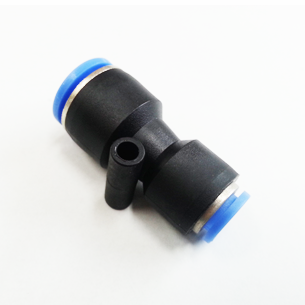
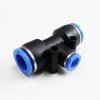
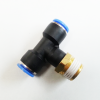
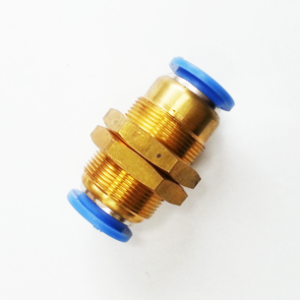
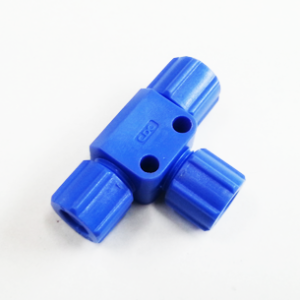
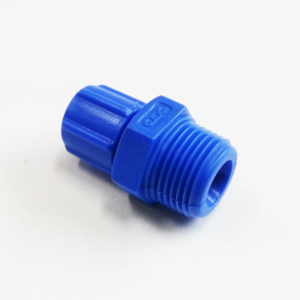

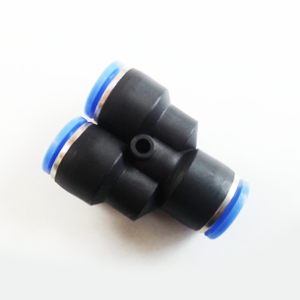
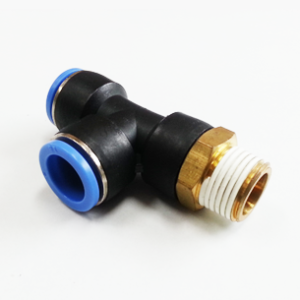
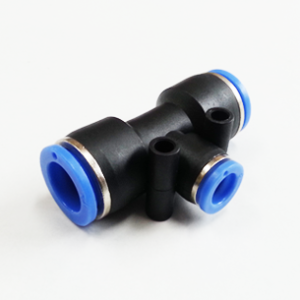
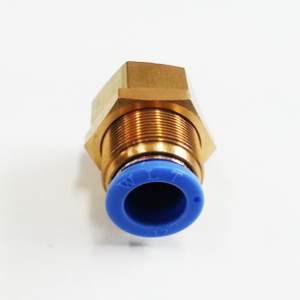
Reviews
There are no reviews yet.